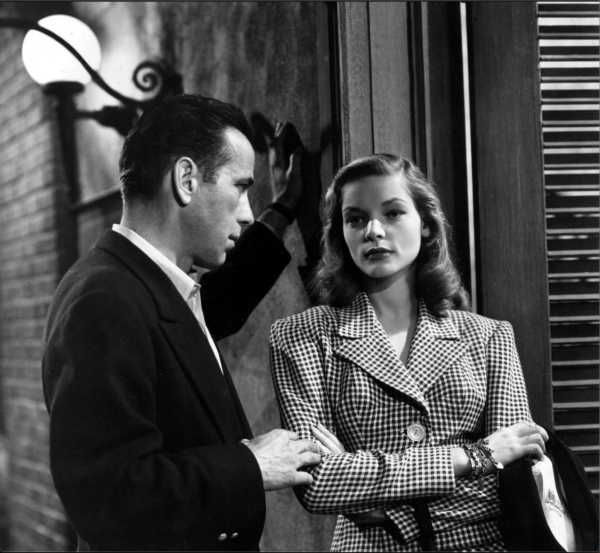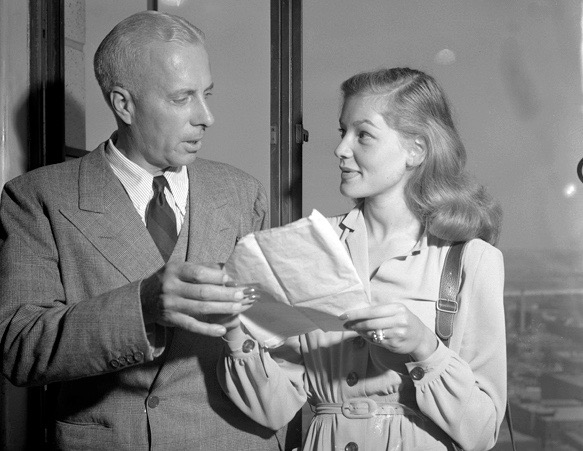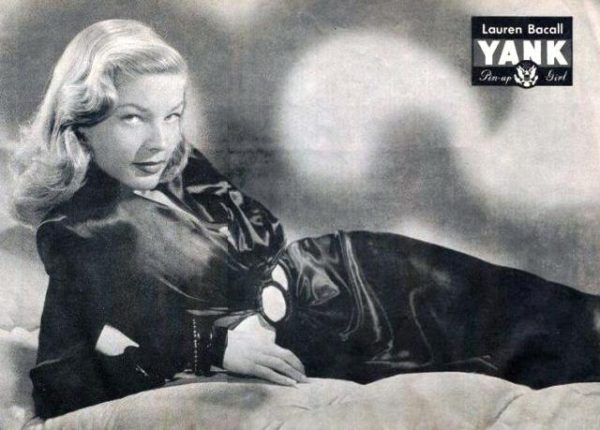Femme fatale Lauren Bacall was a star during Hollywood’s golden age in the 1940s. Strikingly beautiful, with a slim figure, a long mane of hair, seductive eyes and a low, husky voice which could set hearts aflutter, she was a complete unknown when she starred opposite Humphrey Bogart, her future husband, in the 1944 film To Have and Have Not.

Bacall’s meteoric career languished after Bogart’s untimely death, but the magnetism she displayed in her first few movies has never worn off as far as movie fans are concerned.
Pierre-Henry Salfati’s documentary, Lauren Bacall, A Look From the Sky, which examines the trajectory of her life from aspiring entertainer to mature actress, will be screened at the Toronto Jewish Film Festival on May 6 and May 8.
Before she renamed herself, she was known as Betty Joan Perske. A nice Jewish girl from the Bronx, she was born in 1924, the daughter of Jewish immigrants from Romania and Belarus. According to Salfati, she drew her inner strength from her ancestral roots.
A first cousin of the late Israeli politician Shimon Peres, Bacall aspired to be a theater actress, but went into modelling after finishing high school. Her appearance on the cover of Harper’s Bazaar in 1943 caught the attention of film director Howard Hawks, who invited her for a screen test in Los Angeles. By then, she was calling herself Betty Bacal, her mother’s maiden surname. She added the extra L after landing in Hollywood, but it was Hawks who persuaded her to change her first name to Lauren.

In a frank admission, Bacall recalls that Hawks made “cracks” about Jews. She regrets she didn’t “stand up” to his antisemitism or show more of an open affinity with her Jewish heritage.
It took Hawks, a celebrated figure, a year to prepare Bacall for her role in To Have and Have Not. Bogart, 44 and married, fell in love with Bacall, 19 and single, on the set of the movie. Salfati speculates that Bogart was really infatuated with the character she portrayed in the film. Married in 1945, they were regarded as a cool couple, their huge age difference notwithstanding. Salfati claims they had a good marriage, producing two children. Yet, he says, Bogart had a 13-year affair with his hairdresser that only ended after he fell seriously ill.
Bacall solidified her status in Tinseltown with her appearance in The Big Sleep (1946). Two years later, she and Bogart starred in Key Largo, the last movie in which they appeared together.

Bogart died of cancer in 1957, forcing her to learn to live without him. Yet, as he lay dying, she had a fling with Frank Sinatra that lasted several months. After Bogart’s death, she found consolation in the arms of actor Jason Robards, with whom she had one child. She left him after eight years, finally unable to come to terms with his alcoholism.
Despite her success, Bacall felt insecure, tormented by the perception that people thought she was Bogart’s wife rather than an actress in her own right. It might have been more than just an impression. After Bogart’s death, as Salfati points out, jobs dried up and the only roles she was usually offered were of a minor nature.
Having outlived her usefulness in Hollywood, she went back to New York City and began appearing in Broadway plays and occasional films. In 2009, five years before she died, she won an honorary Oscar for lifetime achievement.
Salfati closes his film with the apt observation that Bacall, a shy and vulnerable person, ultimately remained mysterious and out of reach as far as her movie persona was concerned.